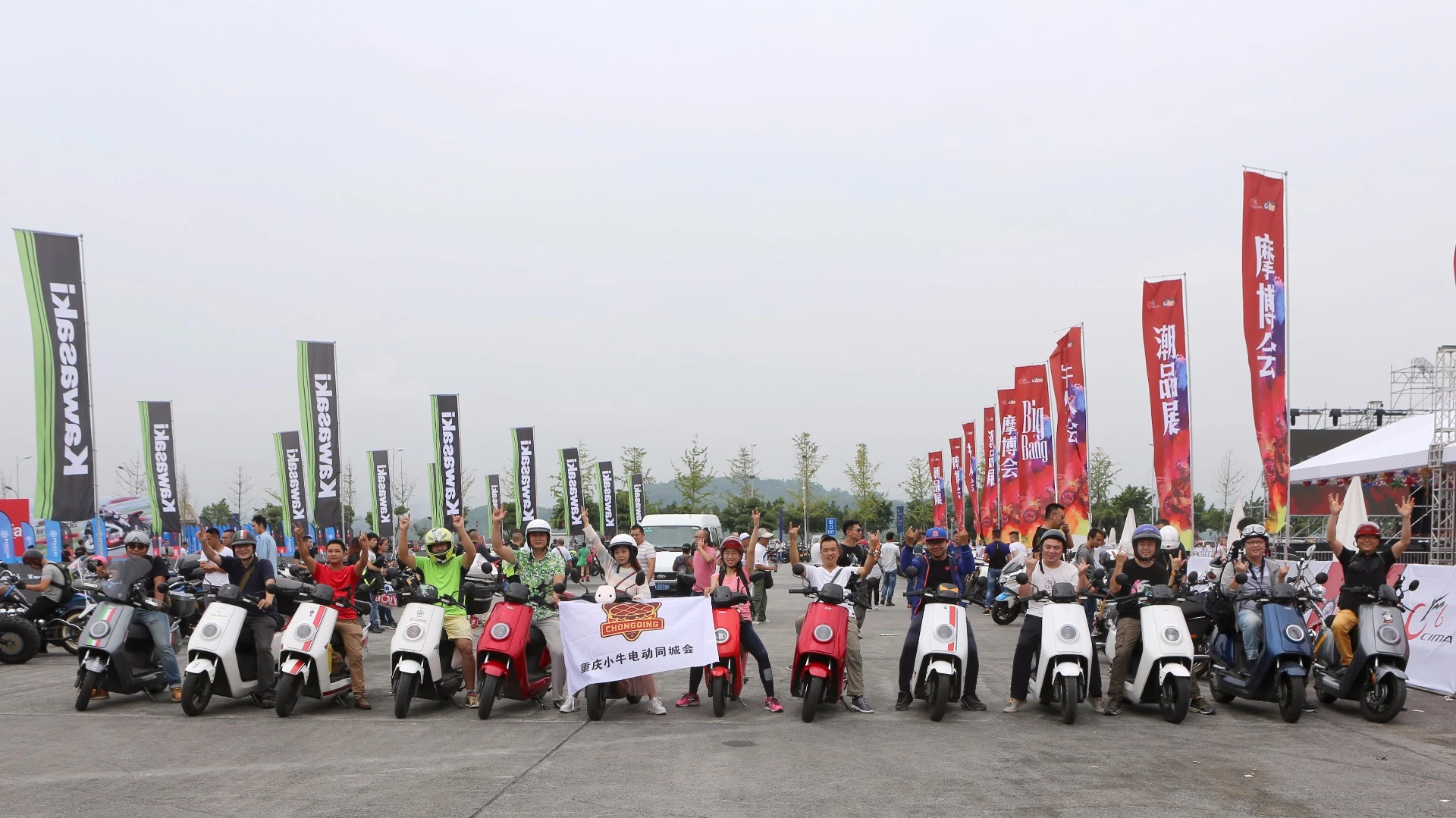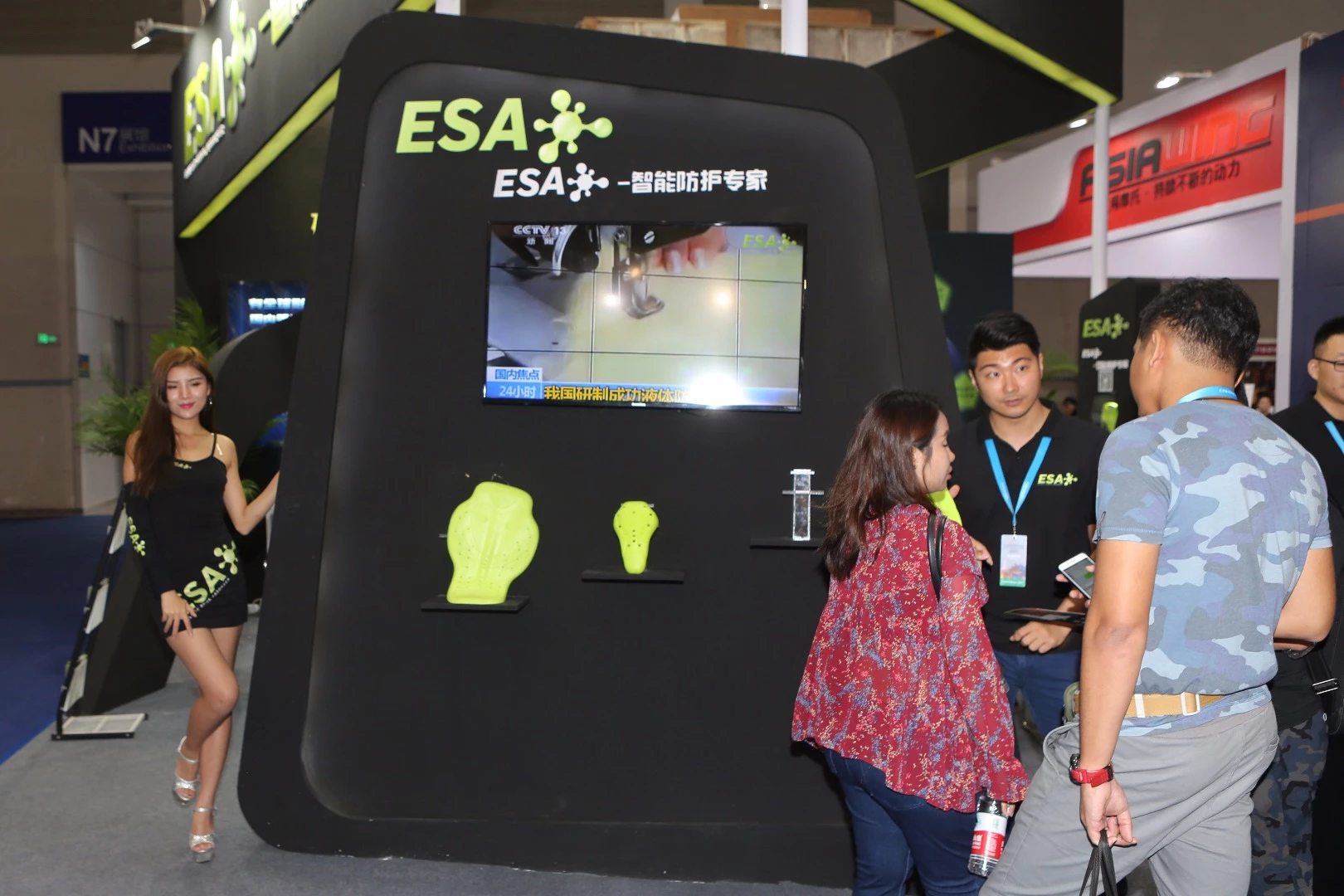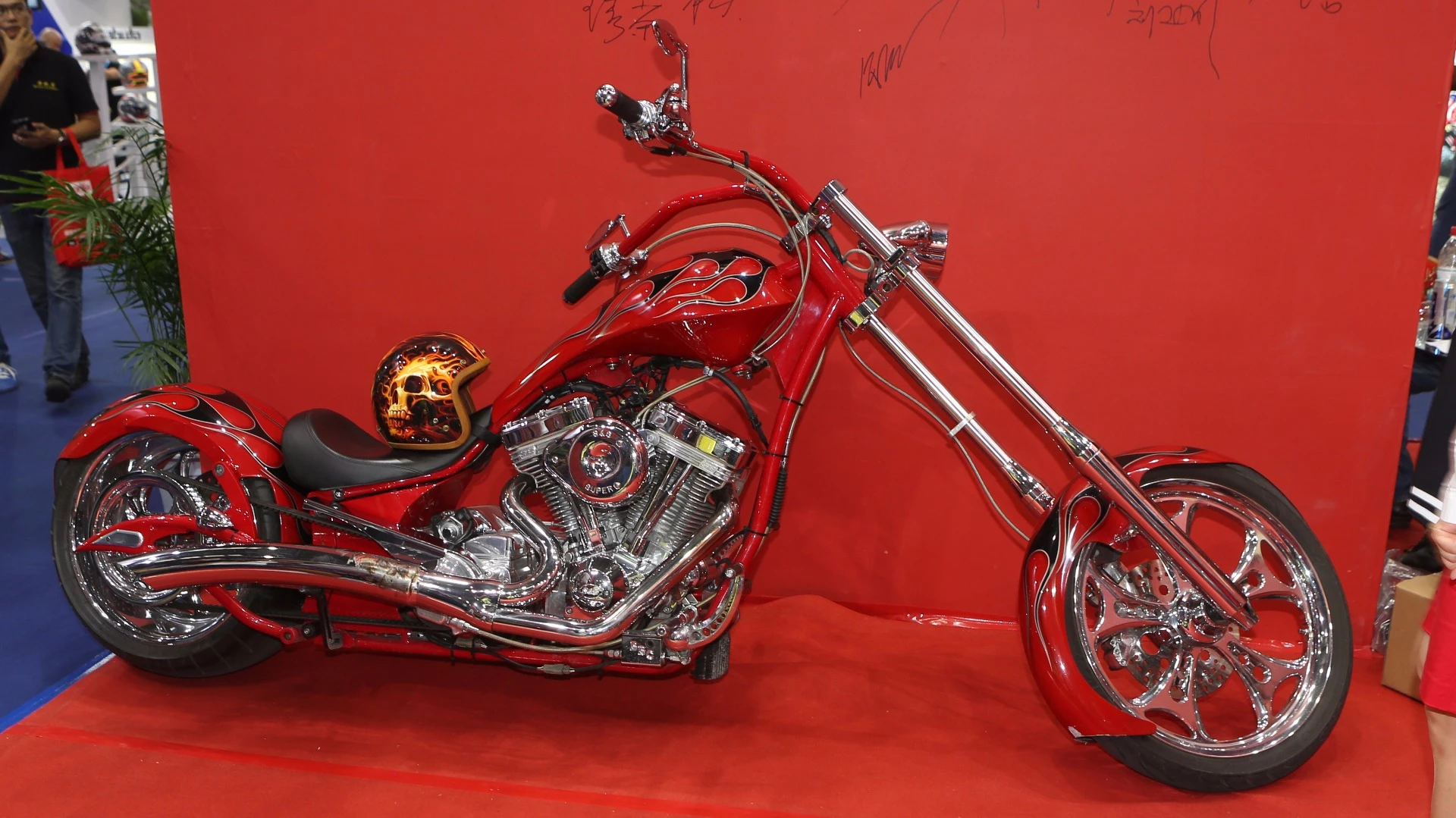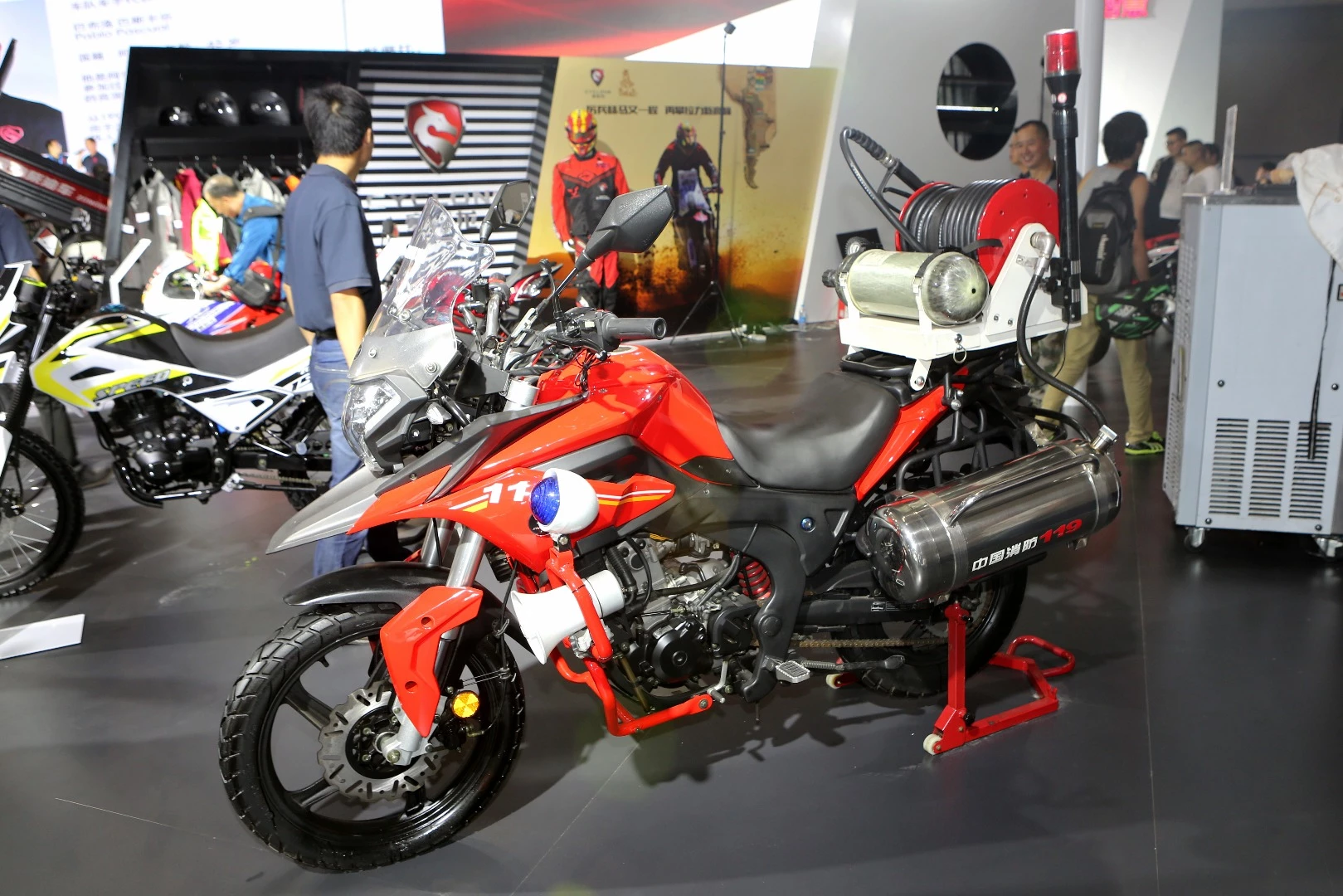China's motorcycle market is evolving at a rapid rate, and it could have a profound effect on the form factor of motorcycles of the near future. Although China is no longer the world's largest motorcycle market or the world's largest motorcycle manufacturer (it has now fallen behind India on both counts), it still dwarfs all other national motorcycle markets.
Together, the world's two most populous countries now make up the vast majority of the world's motorcycle manufacture and consumption and with the governments of both countries now committed to the electrification of personal transportation in short order, some dramatic changes can be expected to occur over the next few years, and the motorcycle is going to be at the very forefront of that change.
In India, Hero, Honda, TVS, Mahindra, Yamaha and Bajaj will all launch electric two-wheelers at next February's Auto Expo in Mumbai, well ahead of the Indian Government's target date of 2030 to transition the country to electric vehicles.
With China's centralized Government and a deadline looming a decade sooner, China's motorcycle manufacturers have a much shorter runway and are scrambling to quickly adapt to what amounts to an existential threat. Motorcycles have already been banned from many major cities in China and the relentlessness of the country's quest to reduce air pollution will see little leeway on commercial grounds. It will be a matter of comply or perish.

Hence it was an interesting time to visit the 15th China International Motorcycle Fair in Chongqing last week, a show that may not be the most important motorcycle show in the world, but can be seen as a harbinger of the changing landscape for motorcycle development in the countries that produce them.
It's quite possible you've never heard of Chongqing, but despite the rise of India's motorcycle industry, it remains the de facto capital of the world's motorcycle industry.
Chongqing is an ancient river port and trading hub, located where the Jialing River joins the Yangtze River, 1,800 km west of Shanghai, and 1,300 km north of Hanoi (Vietnam), and dates back at least 3,500 years. Though China's motorcycle industry is young by western standards, Chongqing has produced far more motorcycles than any other city in the world every year for the last decade, and it's where Loncin, Yinxiang, Lifan and Zongshen all began manufacturing motorcycles on their journey into industrial conglomerates.
Most of China's major motorcycle manufacturers started in Chongqing and have used the concentration of related industries in the city of 14 million people to create a self-sustaining motorcycle empire ... an empire that is just about to undergo an electrification revolution.
It's extraordinary how humanity's opinions can change so quickly. I remember a time when "Made in Japan" was a derogatory term, and it wasn't that long ago that "Made in China" was similarly dismissive. Now we're all carrying smartphones made in China with technology so complex that it might as well be "magic," so it's an ideal time to reflect upon how quickly technology has progressed in China.
A long way in a short time

When I first came across this motorcycle on the floor of the Chongqing Exhibition Center, I wasn't sure if I was looking at a restoration or not. It's a Chang Jiang 750 and apparently produced from spare parts stocks so plentiful that bikes assembled from original parts still regularly hit the market as new in China, where they were manufactured from 1957 onward, initially as the motorcycle of choice of the Chinese People's Liberation Army, and later for civilian use.
The tale goes much further though, because due to "technical collaboration" between the Peoples Republic of China and Cold War Soviet Russia, the CJ750 is a copy of the Russian made 1956 IMZ (Irbitski Mototsikletniy Zavod) Motosikl 72 ... aka M72.

In war time, each army has home-made tools of the trade, and in WW2, both sides recognized early that Germany had the best motorcycles by far in the form of the BMW horizontally-opposed shaft-drive twins. The WW2 United States Army even put out a tender for motorcycles of similar design as the chain-driven Harley-Davidson WLA V-twin 750s were clearly inferior to the BMWs. Both Harley and Indian produced their own version of the horizontally-opposed shaft-drive twin and the small number produced are quite sought after by collectors these days.
The 750cc IMZ M72 began its own technological evolution as an improved military version of a 1938 BMW R71. In order to fully understand the history of the model, I consulted Dan of Chiangjiangunlimited.com. According to Dan, "the M72 was built in Irbit (Ural), and later, in the Ukraine (Dnepr), and when the M72 was finally considered to be obsolete (ca. 1957), the tooling ended up in China where the bikes were produced until the mid-1980s.
"The original CJs were identical to the M72s. Most of the improvements made by the Chinese were anything but. They introduced a 12 V electrical system that uses an alternator and rectifier, and it's just awful. They also introduced a 32 HP OHV version of the engine which is great, but it uses the same electrical system. The original 6 V, 22 HP flatheads were fairly decent machines, especially the ones built for the PLA. I have a PLA bike that's very reliable and a civilian version that's not."
There's a healthy trade still in Chang Jiang 750s in China, and after beginning life as a German product, then being modified for reliability by Russia and then China, the former military machines are as sturdy and reliable as a motorcycle can be. Not fast, but they get the job done without fail, and spare parts can be found anywhere in this enormous country. They said I could have purchased this one for RMB42,000 (US$6,300) but Dan tells me I could get a good one for much less than that.
This was what motorcycling in China looked like until very recently.
Back to the future
Think of Zongshen as China's equivalent to Honda. One of China's most beloved motorcycle marques, it got its start making motorcycles in Chongqing in 1992. Zuo Zongshen is one of history's greatest rags-to-riches stories, rising from abject poverty to become one of the world's richest people. The Zongshen Group now has 50+ subsidiary companies and has diversified its technological development across many related industries and is well poised to ride the tides of change.

The Zongshen stand in the company's home town featured a Proton Exchange Membrane Fuel Cell the company has under development (above). Zongshen also makes the motors for China's military drones and that was another highlight of a truly monumental display.
There was little doubt in walking the floor at CIMA that intellectual property is paid scant regard in China, but that was also the case as Japan's motorcycle industry emerged, and quite soon the technological development torch was carried forth by the former plagiarizers. Wouldn't it be ironic if all those fuel cell prototype motorcycles we've seen at the Tokyo Motor Show for the last decade were beaten to market by the Chinese manufacturers?

Zongshen is moving forward towards the electrification of its offerings on many fronts, showing a wireless charging station for electric motorcycles and ...

... Zongshen's relationship with Canadian company Electra Meccanica was another of the highlights. Electra Meccanica emerged from nowhere last year with its promising urban Solo three-wheeler EV, and has made remarkable progress in a short time frame. Now we understand why progress towards commercialization had been so quick. On a star-studded stand, the almost-a-motorcycle Solo was in pride of place, and in China's rush to electrification and with a government roadmap that does not favor motorcycles, it is clearly one of Zongshen's priorities.

Zongshen currently manufactures more than a million gas-burning motorcycles a year though, and the company's best known foreign partnerships involve the distribution of Harley Davidson in China and a manufacturing and distribution relationship with the Piaggio Group, encompassing Aprilia and myriad other Italian brand names.

F.B. Mondial was once the toast of Italy, with the tiny manufacturer winning five rider and five manufacturer 125 cc and 250 cc class World Racing Championships between 1949 and 1957. The company's first bike for many decades is the Hipster, appropriately available in 125 and 250 guise in most markets, though in China it sold with a 150 cc engine and was badged as both Aprilia and Mondial.

Zongshen like many other Chinese manufacturers is in the process of building electric only motorcycle brands and was the first manufacturer to become engaged in international electric motorcycle racing, having some success but not being in the same league as the all-conquering Mugen racing team. The electric prototype mopeds on the Zongshen stand pictured above were fully operative and looked production ready, though they were explained as being "for customer approval."
The KTM/Ducati effect

If I saw the future of urban motorcycling in Chongqing, it would be a lightweight minimalist naked bike with a trellis frame. The success of the relationship between China's CF Moto and KTM appears to have everyone chasing the leader so hard that the trellis-framed lightweight single cylinder naked has become the ideal urban sports bike in China. Trellis frames are IN!

This is the new Loncin 300CRX, 17-inch wheels, a 292 cc liquid-cooled four-valve motor and a trellis frame.

This is the Yingang stand where the company's top-selling Monster took pride of place. It isn't a full-sized motorcycle but more akin to the Honda Grom, though Yingang also offers a 200 cc Monster.

You didn't have to look too hard to find people who had swapped out the badges on the Yingang Monster to individualize it and stand out a bit in a country with 1.3 billion brethren. Customization of all motorcycles was rampant and many of the stands at the show sold gear that helped to make any motorcycle distinctive.

CFMoto's 125cc Papio is one of dozens of mini-street models that have surfaced in the last few years since Honda's Grom popularized the category. Kawasaki's KR125 Pro joined the market this year after Kawasaki started the category a decade ago with the KR110. The low seat height, low weight and sensational handling of such bikes makes them ideal for Asian bodies and urban conditions and this is definitely a category on the rise across Asia.

The joint stand of Zhenghao and Hongya (see image gallery) was a prime example of the vast Chinese motorcycle ecosystem. Zhenghao showed just a small sampling of a massive range of small capacity motorcycle engines it produces, while the periphery of the stand featured Hongya motorcycles which use some of those engines. The centerpiece of the stand was a Hongya Dake ... no prizes for guessing the inspiration for the design.

What comes next? When motorcycles with carburetors are already legislated to become an endangered species in China, and electrification is mandatory shortly thereafter in cities, quite clearly that single cylinder internal combustion engine is going to be replaced, and that is exactly what is happening. That's Loncin's latest offering above – a lightweight electric sports bike with a trellis frame and a 1.2 kW motor. When a bike is very light, it doesn't need a lot of horsepower.

There's a new electric version of the Yingang Monster too, available with 1,500 W and 3,000 W motors. I'm a big fan of Honda's Grom, and can't wait to try an electric version with that light weight, short wheelbase and electric low down grunt.

This mini-sports bike too is electric, and the influence of the breadth of the Chinese motorcycle eco-system became obvious as I further walked the halls.

Just as there are many companies in China that specialize in building OEM motors, there are companies such as QSMOTOR which offer complete electric drivetrains.

Indeed, the entire swinging arm and motor of the mini-sports bike two images above was on display on the QSMOTOR stand. They can be purchased in bulk, with swinging arm, batteries and controller – just add a frame and front wheel.

Another bike we're certain to see outside China soon is the 19 kW Urban Evoke which boasts a 200 km range and a sub-$10,000 price tag.

New form factors were also evident as Chinese motorcycle manufacturers attempt to woo consumers onto personal transportation for the first time ... and on this point it is worth mentioning is that the audience at CIMA had a much higher percentage of females than you would see at a motorcycle show in any other country. It might look like an overgrown kickscooter, but the Seev comes in 500 W and 800 W form and attracted a lot of interest.

Yet another very promising and unconventional format is this tilting three-wheeler from Doohan, a Chinese company we wrote up in August 2016. The Doohan iTank uses a 1,490 W rear hub motor which is more than enough power for urban commuting in most countries.
The magnitude of this show and the diversity of the offerings can be seen in the image gallery, though it wasn't entirely comprised of small capacity or electric motorcycles and scooters, as can be seen from the bikes below.

The pick of the Regal-Raptor display was the new Pilder 650V Pro-Street, a liquid-cooled V-twin producing 39 kW (53 hp) at 6,750 rpm.

Regal-Raptor is one of the more interesting Chinese marques styled along Harley-Davidson lines, with a very similar logo (see in the background) and aimed at a similar audience with a range of larger capacity motorcycles. The bike above is the new DD600E Cruiser, a 600cc parallel twin producing 36 kW (49 hp) at 5,500 rpm, and yes, it can be purchased with a bike trailer (see the image gallery).

China's first trials bike manufacturer launched at this show in 2016 when the Tenaci Wong marque was shown for the first time. The intention is to make trials riding more accessible to the Chinese public and though the Tenaci Wong TW200S trials bike isn't competitive with Montesa, TRS, Beta and Gas Gas just yet, it has most of the features of those bikes wrapped around a water-cooled, fuel-injected 200cc single-cylinder engine and sells for RMB18,800 - approximately $2,800. At that price, it can be expected to give the sport some real impetus in China.

KEWS motorcycles make motocross bikes but don't have a website, and indeed, didn't even have a brochure for the 2017 range. There were two new models which were described as "like Husqvarna" ...

and "like Honda." They really were too!

There are no doubt aspects of Kayo's new range that will be familiar too.

Asiawing's latest offerings include a full range of 250cc and 450cc endure, motocross and motard liquid-cooled bikes and now come with electronic fuel injection.
There's much more in our China International Motorcycle Fair photo gallery.




















































































































